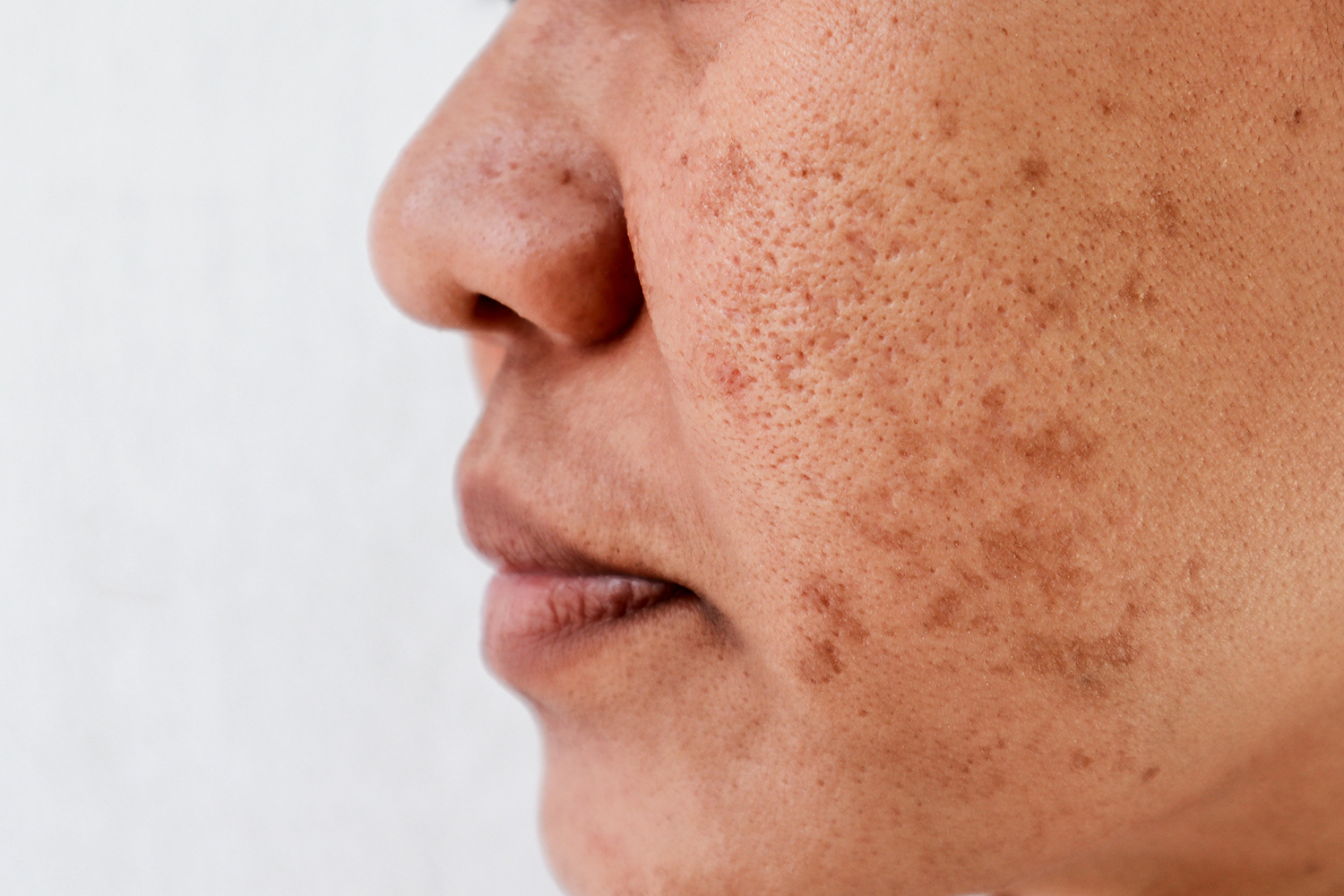Every week in my clinic, I see at least one person who saw another doctor for their melasma and had laser treatments. The melasma usually clears for about a month, but then comes back even worse! Please don’t get laser or light therapy to even your skin tone without coming to discuss with us first.
Learn why lasers and light therapies are not effective treatment options for melasma and other pigmentation problems, and see which treatment approaches are much better instead.
Why Laser Treatments Are Not Right for Melasma
Uneven pigmentation is usually caused by sun exposure, hormones, over-exfoliation, or inflammation. Skin cells called melanocytes get turned on by all of these triggers, increasing melanin production and causing pigmentation problems like melasma.
Laser and light therapies like IPL (intense pulsed light) cause inflammation, which is one of the activators for melanocytes mentioned above. Red and blue light therapies will also worsen dark spots on the skin for the same reason.
Why Are Lasers Sometimes Suggested for Uneven Skin Tone?
If lasers and light treatments make uneven skin tone worse in the long run, why do I see so many people in my clinic who have been given these treatments to get rid of melasma? The answer is that lasers and light treatments will provide a short-term improvement, and people often want a quick fix for skin problems. The energy from the laser blasts away pigment in the skin, making it temporarily look more even-toned.
However, the bad news is that the inflammation triggered by the heat and light from the laser stimulate the skin cells that produce melanin to turn back on — in fact, they turn on even more strongly than before. It takes about two to three months for all of this new pigment to get to the surface of your skin, which is why you see a delayed response. So a few months after your laser treatment, your uneven skin tone is suddenly worse than it started.
How to Treat Melasma the Right Way
Fortunately, there is an effective solution for uneven skin tone and melasma — but the catch is that it won’t be a quick fix.
Using the proper skincare regimen is the slow and safe way to treat melasma and other pigment-related skin conditions. This will take 8 to 12 weeks to work, because that is how long it takes the skin to entirely replenish itself. The results, unlike with laser and light treatments, will be long-lasting and will not come along with unwanted side effects that make matters worse.
The best skincare regimen to treat melasma will target all seven of the pathways that play a role in skin pigmentation.
- Block pigment production.
- Block the transfer of pigment from the PAR-2 pathway.
- Prevent inflammation with anti-inflammatory ingredients.
- Exfoliate the skin to generate new, even-toned skin.
- Use antioxidants like Vitamin C to prevent free radicals.
- Use sunscreens to prevent activation of melanocytes.
- Use moisturizers with unsaturated fatty acids, because some moisturizers block the effects of skin lightening ingredients.
Read my dedicated blog post to learn more in-depth information about each of these pathways.
Bottom Line
Skin treatments for melasma take time, so be patient and go the slow and safe way by using the proper skincare regimen to even your skin tone. Avoid lasers for dark spots on the skin, as these “quick fixes” will end up making dark spots worse in the long run.





